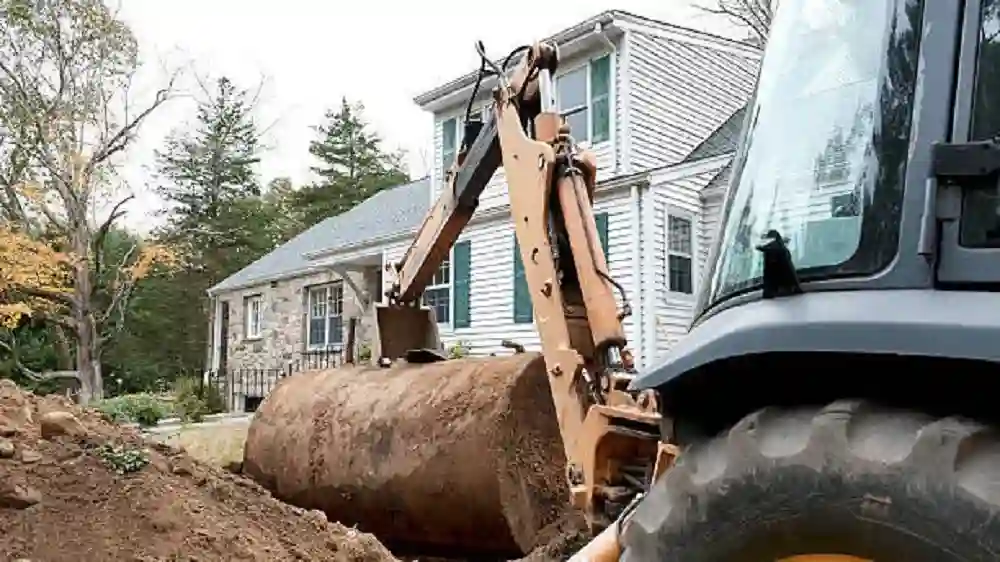Beneath the serene landscapes of many homes, an aging and potentially hazardous relic may be lurking – the underground oil tank. As the custodian of your property, understanding the intricacies of oil tank removal becomes paramount. In this comprehensive exploration, we demystify the process of clearing the underground, providing insights into why, when, and how oil tank removal is essential for safeguarding both property and environment.
The Aging Underground Threat: Understanding the Risks
Many homes, especially those constructed several decades ago, relied on underground oil storage tanks for heating. These tanks, however, were not designed to endure the passage of time indefinitely. Over the years, corrosion can take hold, leading to leaks that pose significant environmental and health risks. The challenge lies in the fact that these risks often go unnoticed until they manifest in the form of property damage, soil contamination, or health issues.
Recognizing the potential dangers of aging underground oil tanks is the first step toward informed decision-making. As homeowners delve into the intricacies of the removal process, they embark on a journey to clear the underground of these silent threats.
Why Oil Tank Removal Matters: Environmental and Health Implications
The environmental consequences of a leaking oil tank are profound. Oil can permeate the soil, potentially reaching groundwater and affecting local ecosystems. Soil contamination poses long-term environmental challenges, disrupting the delicate balance of the landscape. Moreover, exposure to oil vapors can lead to respiratory issues, skin irritations, and other health concerns for residents.
The importance of oil tank removal, therefore, extends beyond the immediate property. It is a responsible measure to protect the environment, community health, and the overall well-being of those living in the vicinity. Clearing the underground of these aging threats is a proactive step toward mitigating potential hazards.
When to Consider Oil Tank Removal: Signs and Triggers
Determining when to embark on the oil tank removal journey involves recognizing key signs and triggers. While proactive monitoring with tank trackers can aid in early detection, several indicators may prompt homeowners to consider removal:
Visible Signs of Deterioration: Physical manifestations of a deteriorating tank, such as rust, corrosion, or visible leaks, are clear signals that removal is imperative.
Property Transaction: When selling a property, prospective buyers may request the removal of underground oil tanks due to concerns about environmental risks.
Regulatory Compliance: Changing local regulations or non-compliance with existing regulations may necessitate the removal of aging tanks.
Environmental Assessments: Environmental assessments revealing soil contamination or potential risks may trigger the need for removal.
By staying attuned to these signs and triggers, homeowners can make informed decisions about when to initiate the oil tank removal process.
The Step-by-Step Process of Oil Tank Removal
Assessment and Inspection:
The journey begins with a comprehensive assessment by qualified professionals. Inspections aim to determine the condition of the tank, identify potential leaks, and assess the surrounding soil for contamination.
Permit Acquisition:
Before any removal activities commence, obtaining the necessary permits from local authorities is crucial. Compliance with regulations ensures a legal and smooth removal process.
Tank Pumping and Cleaning:
To minimize the risk of spills during removal, the tank is emptied of any remaining oil and thoroughly cleaned. Specialized equipment is employed to ensure a safe and efficient pumping process.
Tank Excavation:
Careful excavation follows, with heavy machinery delicately unearthing the underground tank. Precision is essential to avoid damage to the tank and prevent potential spills.
Tank Removal and Disposal:
Once excavated, the tank is removed from the site. Proper disposal methods, in accordance with environmental regulations, are employed to ensure responsible handling.
Soil Remediation:
In cases where soil contamination is detected, remediation efforts are initiated. This involves removing and replacing contaminated soil to restore environmental balance.
Verification and Documentation:
A final inspection is conducted to verify compliance with regulatory requirements. Comprehensive documentation, including permits and inspection reports, is retained for reference.
Engaging Professionals: Why Expertise Matters
Oil tank removal is a complex process that demands the expertise of qualified professionals. Engaging specialists who understand both the technical intricacies and regulatory landscape ensures a smooth and efficient journey from assessment to removal. Professionals guide homeowners through the maze of permits, inspections, and compliance, reducing the stress associated with the removal process.
The Aftermath: Property Transformation and Peace of Mind
As the oil tank removal journey concludes, the property undergoes a transformative process. What was once a potential hazard beneath the surface has been safely removed and responsibly managed. Homeowners are left with the assurance that their property is free from environmental risks, and the community benefits from the elimination of potential hazards.
In conclusion
Oil tank removal is not merely a physical extraction; it is a holistic process that involves environmental responsibility, regulatory compliance, and property preservation. By understanding the importance of clearing the underground and engaging in a systematic removal process, homeowners contribute to the well-being of their property, the environment, and the broader community. The journey from an aging underground threat to a clean, safe property underscores the significance of proactive oil tank removal.


